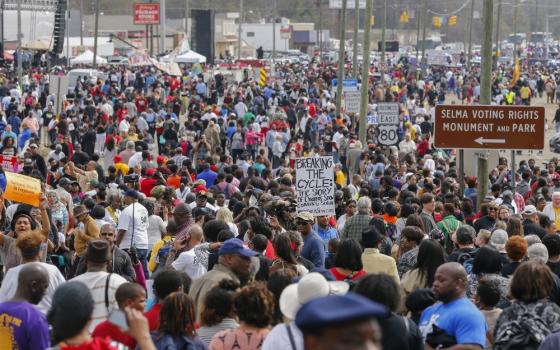Maybe I’m just more plugged into race issues than I used to be (since last year, I’ve made it a point to follow more women and more women of color on social media), but it seems to me that race was overwhelmingly the issue du jour last week.
First, on Wednesday, the U.S. Department of Justice released the report from its Ferguson investigation. It was a scathing indictment. According to the report, the practices of the Ferguson Police Department, as well as those of the city’s municipal court system, “are shaped by the City’s focus on revenue rather than by public safety needs.”
That conclusion sounds bad but not – you know – the worst ever. It’s an unfortunate fact that lots of organizations prioritize money over good practices. But the DOJ investigators were just getting started.
In 102 pages, they go on to chronicle how this obsession with revenue – combined with Ferguson’s history of racism – has created a law enforcement system that not only illegally targets black people, but that also routinely strips residents of their constitutional rights, and allows police officers to terrorize residents with, more or less, absolute impunity.
If you haven’t read the report in its entirety, I highly suggest that you do. It’s infuriating and stomach-churning, but it’s a crystal clear look at what happens when endemic racism goes unchecked.
Then, two days after the Ferguson report, #BlackOutDay took over the Internet. Stemming from an idea hatched on Tumblr, black people around the world were encouraged to post selfies online as a challenge to dominant (read: exclusively white) standards of beauty.
Naturally, the event led to an extended discussion about race – about how and why black people have historically not been deemed beautiful, and how the beauty and entertainment industries perpetuate that idea. Then (because, of course) the competing hashtag #WhiteOutDay sprung up, and there was an additional discussion about how self-love, as expressed by black people, is not racist.
And then there was Sunday.
This weekend marked the 50th anniversary of Bloody Sunday – a peaceful civil rights protest in Selma, Alabama, where some 600 activists were attacked as they marched across the Edmund Pettus Bridge. The march was a watershed moment in the civil rights movement and, to commemorate it, on Sunday tens of thousands of people staged another march in Selma over the weekend.
The Selma anniversary was an impetus for reflection on the last 50 years of race relations in the United States. U.S. Congressman and civil rights leader John Lewis took to Twitter to publically reflect. In The New York Times, veteran journalist Gay Talese wrote about what’s changed since he was in Selma to cover the original march.
Here at Global Sisters Report, we’re reflecting, too. In addition to Carol Coburn’s feature about the women religious who marched in Selma, looking at the impact that had on the following decades of religious life, we also went into the National Catholic Reporter’s archives to dig up original Selma coverage. At the time, NCR was just a few months old, but that didn’t stop the paper from ambitiously taking on the march and all its nuanced aftermath.
For example, the NCR editorial staff penned an editorial taking on Catholics who criticized sisters’ participation in the march. They published a first-person essay by Judith Mary, a Loretto sister who had marched in Selma, as well as a Selma poem by Dominican Sr. Ann Mary. You can read all of the archived coverage here; it’s an interesting examination of not only of Catholic sisters in Selma, but also of how a fledgling Catholic paper chose to cover them.
Of course, as the events of last week prove, race relations in the United States are nowhere near fixed. In fact, this week is already poised to be consumed with another race story: the shuttering of a University of Oklahoma fraternity after a leaked video showed members singing about lynching n****rs.
The march on Selma was a turning point, but it was not a cure.
I can only pray that, 50 years from now, things like Bloody Sunday and #WhiteOutDay will seem like absurd relics of an unbelievable past. In half a century, I hope journalists will dig into the archives to read the DOJ Ferguson report and be blown away that such a system could even exist.
I also hope readers of the future will be able to find GSR and NCR coverage of issues like race, immigration and climate change and be able to trace the efforts of the women religious who worked tirelessly to effect change. After all, that’s what we’re all about.
(Happy National Catholic Sisters Week!)
[Dawn Cherie Araujo is staff reporter for Global Sisters Report based in Kansas City, Missouri. Follow her on Twitter @Dawn_Cherie.]


